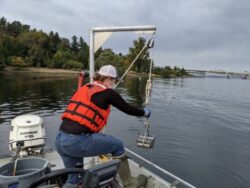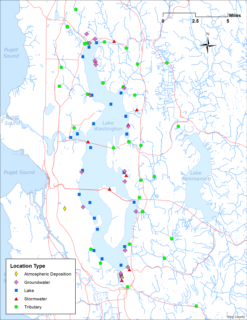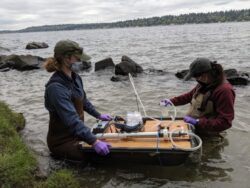by Siana Wong (WA State Department of Ecology/Natural Resource Scientist)
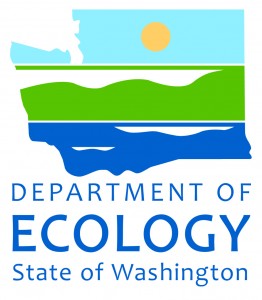 The Washington State Department of Ecology is conducting a study that assesses pathways and sources of a large group of man-made chemicals called per- and polyfluoroalkyl substances (PFAS) to Lake Washington.
The Washington State Department of Ecology is conducting a study that assesses pathways and sources of a large group of man-made chemicals called per- and polyfluoroalkyl substances (PFAS) to Lake Washington.
Per- and poly-fluoroalkyl substances (PFAS) are chemicals used in many industrial and consumer products, like those with non-stick or stain-proof coatings, and fire-fighting foams. PFAS have been manufactured since the 1950s, but manufacturers began phasing out certain compounds – like perfluorooctane sulfonate (PFOS) and perfluorooctanoic acid (PFOA) – in the 2000s over concerns about their toxicity and persistence in humans and the environment. PFAS are released to the environment through manufacturing emissions and through the use or disposal of products containing PFAS. As a result, PFAS are widespread in the environment and some compounds, like PFOS, build up in aquatic food webs leading to elevated concentrations in predator fish species.
Our study follows up on previous surveys documenting high PFAS concentrations in urban water bodies in Washington, as described in the June 2020 issue of Waterline. The main goal of our current study is to identify and assess major pathways and sources by which PFAS enter Lake Washington, one of the urban lakes from the previous surveys. Here, we provide an update of our PFAS work.
From summer 2020 – spring 2021, we implemented the first year of sampling for the study (Phase 1). Our Phase 1 objective was to collect samples in the lake and in various pathways by which contaminants can enter the lake, including tributary inflows, stormwater, groundwater, and atmospheric deposition as precipitation (Figure 1). During the sampling period, many Ecology field staff helped to collect over 500 PFAS samples from 84 locations during 8 sampling events. Samples were sent to a contract laboratory for PFAS analysis.
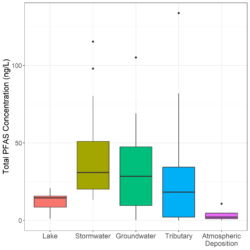
Figure 2. Box plots showing total PFAS concentrations in water samples collected from 2020-2021 in Lake Washington and contaminant pathways to Lake Washington
Initial results indicated that PFAS were widely present in the watershed: PFAS were found in all lake samples and in all sampled pathways and tributary subbasins. While total PFAS concentrations were fairly consistent in the lake surface water (median concentration ~15 ng/L), concentrations in the tributaries, stormwater, and groundwater were more variable, with areas of lower and higher concentrations that ranged from non-detectable to over 100 ng/L (Figure 2). Perfluorooctanesulfonic acid (PFOS) and perfluorooctanoic acid (PFOA) were among the most frequently detected of 40 different PFAS analytes that were analyzed. These results suggest that, despite being largely phased out of manufacture and use in the U.S., there remain external sources of PFOS and PFOA as well as other PFAS chemicals to the lake.
In our second year of sampling (Phase 2), planned for summer 2022 – spring 2023, we will focus efforts in areas of the watershed where higher PFAS concentrations or loads were observed during Phase 1. Subsequent analyses of PFAS compositions and total concentrations, combined with knowledge about historic and current land uses, will help us prioritize and distinguish among different types of sources of PFAS to Lake Washington. By identifying major types of sources to the lake, we will better understand how sources can be reduced. While our current efforts focus on Lake Washington, information gained from this study will be largely applicable to other urban water bodies in Washington with PFAS contamination.
More information about the study is provided in our Quality Assurance Project Plan. Check out Ecology’s PFAS webpage to learn more about PFAS and how Ecology is actively addressing PFAS in Washington.

